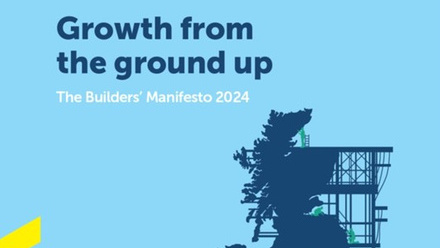Construction estimating software can save time and money but there is a reluctance among some builders to swap spreadsheets for software, with concerns over cost, accuracy and ease of use. We explore what to look for when choosing software and how to find a solution that meets your needs.
Master Builder Rob Clark, Director of Broadfield Construction NW Ltd, started using estimating software when faced with an influx of jobs seven years ago and hasn’t looked back since.
“Like most of us I used to use the pen and paper method,” he explains. “I set out to look for software as the jobs were coming in thick and fast and we could not price them quickly enough.”
Although the cost initially seemed high, it soon became clear that the software was an asset to the company, he says, taking away stress and improving efficiency.
“For example, we could spend hours doing extensions, but I can now turn around the estimation time for a large extension in about an hour, from analysing the drawing, to producing the estimate and having it out to the client,” he says.
Research is key to choosing the right software and can be done quickly and easily online. Make sure to ask plenty of questions, watch demonstrations and webinars, and request a free trial to test the software and assess its suitability and user friendliness.
Decide whether you want an annual subscription or if you would prefer to purchase it outright. If you are buying the software, you also need to consider the costs of extras such as maintenance contracts.
Choose a future-proof solution
Software that will grow with you and meet your business’s needs now and in the future is vital.
“You need to think about where your business is today and where it is headed,” says Joanna Mulgrew, Operations Director at HBXL Group. “You don’t want to make an investment in your business today and it is not going to be right for you next year.”
While basic packages will suit specific jobs, such as a loft conversion, larger projects will need more complexity within the solution, so don’t choose a package that is too basic for your needs.
Consider what you want to get out of the software. Are you looking for estimates or detailed quotes? Are you tendering for local authority contracts? Will you need SMM7 or NRM outputs?
Some software will also deliver reports such as profit and cashflow forecasts or material and labour using estimating data.
Choose software designed for the UK market
When searching for software online, there will be products from countries such as the USA and Australia, so make sure you choose a solution that is compatible with the UK market. American spellings and the formatting of dates can cause issues.
Mulgrew explains: “Some of these software solutions might seem pretty good but does the content meet UK Building Regulations from a spec perspective? Is it working in feet and inches? Has it got different spellings for labour, for example, which could look like a typo in your quotation?”
Keeping up to date with costs
Find a solution that updates you on changing materials costs, which can be national average prices or merchant specific, as this will enable you to give your clients a more accurate quote.
“The main cost in any job is materials. Materials are a variable cost, day-to-day, from region to region, from merchant to merchant. You need to minimise that by using something with up-to-date material prices, which will have a massive effect on your final costings,” says Build Aviator Estimator Wayne Rushton.
A pre-populated package will save you from having to key in a full price book from scratch but check if prices can be edited within the software so that you can change labour rates to suit the arrangements you have with sub-contractors, for example.
Saving you time
You may need to invest a bit of time learning how to use the software initially, but it should ultimately help to streamline the estimating process, saving time and ensuring that all relevant material is included.
“A good package will include quite a lot of automation to stop you forgetting things. I would recommend lots of prompts and templates in the software to make sure you don’t miss anything,” says Mulgrew.
Don’t be surprised if your price and the software estimate price don’t match, as wastage, theft from site, inflating material costs, replacement tools etc are all too often forgotten in project costings.
“Your overheads are often missed in project costings and the software should help you to take account of your overheads, so sometimes with a software solution you might be surprised to see that you have been missing out a fair amount,” explains Mulgrew.
Is the software easy to use?
There will be a learning curve involved but opt for a system that is straightforward and practical to use and take advantage of free trials to test software.
Andrew Ellis, Designer Estimator Director at Build Aviator, says: “It is all about confidence. You need to use it on a regular basis and know the ins and outs of the program to be able to get the end results that you want. If the wrong information goes into the system, then the reports will be wrong.”
A lack of computer skills can often put people off using estimating software, but support will be provided with a good software package.
“The company I picked has a very good support base in terms of training,” says Clark. “You can go on its website and there are plenty of videos and they walk you right through it and you can pick it up quite quickly.
“It’s like when you buy a tool for your company you have to really get to know the tool and make sure it works for your business.”
Choose a package that offers an appropriate level of support for your business, as the format in which it is delivered will vary (email, telephone etc), and it can be limited to a set amount of time.





